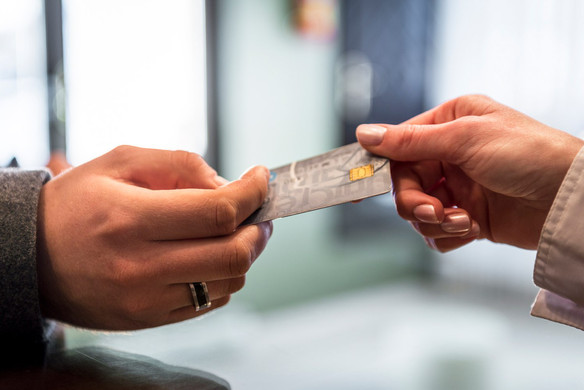With all the recent high-profile breaches, it’s not surprising that payments security is top of mind for consumers. And it’s been an acute concern for government and financial institutions as well — the main driver, in fact, of the United States’ recent shift away from magstripe cards.
EMV chip cards are now the credit card processing standard, which is an important step in the right direction. That’s because they’re extremely difficult to clone, while magstripe cards are easy even for an armchair fraudster to replicate.
However, the adoption of new payment technologies like chip cards doesn’t necessarily mean that consumers are resting easier. In Square’s recent survey, respondents ranked security as the single most important element of the transaction experience. And 30 percent reported an uneasiness about fraud in new technologies like chip cards and mobile payments.
Accept chip cards and Apple Pay everywhere.
Order the Square Reader for contactless and chip.
This perception gap is understandable — paying via chip cards is a daily behavior change that consumers aren’t necessarily familiar with yet. But chip cards are by far and away more secure than magstripe cards. The data on them is dynamically encrypted and constantly changing, making it extremely difficult for fraudsters to extract anything meaningful without sophisticated and expensive technology.
With a magstripe card, on the other hand, all the data is right there, static, on the back of the card. This makes it unnervingly simple for fraudsters to lift bank details and duplicate them onto a new card with an inexpensive credit card skimmer (which is especially a problem at ATMs and gas stations).
The shift to EMV chip cards is a much-needed security advancement in credit card processing. (The United States is actually behind on this score as most countries have been using chip cards for years). But there’s another new payment type that’s arguably more secure: mobile payments.
This answer is surprising to many. In Square’s survey, 77 percent of respondents had not yet tried paying with their mobile device — overwhelmingly citing security concerns as the main deterrent. Consumers are leery of storing bank details digitally, especially on their mobile devices. They worry that if their phone is lost or stolen, or the online systems hacked, their sensitive information will be wide open to fraudsters and identity theft.
However, this isn’t so. Mobile payments like Apple Pay and Android Pay use extremely sophisticated layers of security — tokenization and cryptograms — to keep them on lockdown from fraudsters.
During a mobile payment, the customer’s primary account number (PAN) is replaced with a series of random, algorithmically generated numbers (“the token”). The token is what’s passed through the various networks needed to process the payment. The actual bank data is never exposed. (Apple has a great deep dive into Apple Pay’s security features here).
Additionally, with most mobile payments solutions (Apple Pay and apps on most Android devices), you can activate fingerprint technology as an additional layer of security. So even if anyone were to get their hands on your device, it would be extremely difficult for them to access anything meaningful.
Plus, tokenization makes things easier if your phone is lost or stolen. You can have an individual token canceled as opposed to the entire card, eliminating the need to reenter new payment details on all those sites where you’ve set up recurring payments (phone bills, gym memberships, etc). Learn more about tokenization.
Although most consumers have not yet adopted mobile payments, those who have are impressed, citing it as their preferred payment method over credit cards. They named convenience, security, speed, and utility as a backup wallet as their top reasons for adoption and continued usage.
Mobile payments like Apple Pay, Android Pay, and Samsung Pay are not only the most secure payment type but also good for business. Of those who use mobile payments, most reported a likelihood to seek out stores that accept the technology. They say they tend to spend more (and tip more, in fact) when they’re using mobile wallets to pay.
It’s easy to get on the mobile payments bandwagon as a small business with Square Reader for contactless and chip.
![]()











